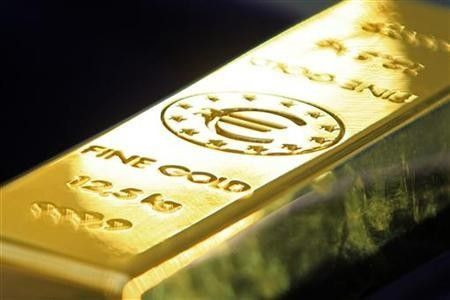Gold flat after hitting record

Gold held steady on Tuesday after the last session's record high, as investors stayed on the sidelines, watching the stalemate in Washington's budget talks to avert a ratings downgrade or default.
Selling related to an option expiration Tuesday pressured gold prices and boosted futures volume, even as the U.S. government appeared inching closer to a devastating default. President Barack Obama's Democrats and Republicans were deadlocked over competing plans to raise the debt ceiling.
Bullion remained up nearly 8 percent in July on euro zone debt fears and uncertainty ahead of the August 2 deadline to raise the U.S. debt ceiling. Gold could retreat if a deal to cut long-term U.S. deficit is perceived as deflationary, analysts said.
"I think gold will come back below $1,600 an ounce ... And the upside is becoming more and more limited because of the higher supply from scrap sales," said Phillip Streible, senior market strategist with Lind Waldock, a unit of futures broker MF Global.
Spot gold edged up 0.2 percent at $1,617 by 2:47 p.m. EDT (1847 GMT), after hitting a record $1,622.49 on Monday.
Spot silver was up 1.1 percent at $40.74, after hitting a two-month high of $41.05 in the previous session. Silver hit a record $49.51 on April 28.
Holdings in iShares Silver Trust, the world's biggest silver ETF, rose 42.44 tons to 9,891.61 tons, their largest gain since June 10.
U.S. COMEX gold futures for August settled up $4.60 an ounce at $1,616.80, trading between $1,607.80 and $1,619.
Heavy futures trading related to the COMEX August option expiration on Tuesday boosted trading volume to above 280,000 lots, one of the busiest sessions of the year.
Streible said that a test downward at $1,600 an ounce is not out of the question on Tuesday due to heavy positioning of August call and put options near $1,600. Bullion prices should find support near $1,580 an ounce, he said.
On weekly charts, gold is targeting a multiyear channel top near record $1,670 an ounce as a break above $1,610 an ounce eliminated the downward bias toward $1,560, said BarCap technical analysts.
A broadly lower U.S. dollar due to investor frustration about the debt talks failed to boost gold.
The correlation between gold and the dollar also appears broken, indicating gold to decouple from the U.S. currency in the short term as the failed debt talks fanned default fears and dimmed the greenback's prospects.
Meanwhile, the correlation between gold and Swiss franc strengthened to around 0.9, as both benefited from safe-haven buying.
GOLD COULD RETREAT ON U.S. DEAL
Some analysts said that a deal would eventually be agreed between Democrats and Republicans to avoid a debt default for the world's largest economy, in a move likely to put some short-term pressure on bullion's recent gains.
"How much of a correction there may be and for how long will in large part depend on the specifics of the agreement and whether it will be enough to support the U.S. dollar and reduce investment demand for safe-haven instruments such as gold," said James Steel, HSBC chief commodity analyst.
A small majority of economists -- 30 out of 53 -- surveyed over the past two days said the United States will lose its AAA credit rating from one of the three big ratings agencies -- Standard & Poor's, Moody's or Fitch, a Reuters poll found.
In fundamental news, South African gold miners are gearing to join tens of thousands of workers seeking pay rises in widening strikes, threatening to hurt output at a time when bullion is at record highs.
South Africa was the world's fourth-largest gold producer in 2010, after China, Australia and the United States.
Among platinum group metals, platinum was up 1 percent at $1,802.53 an ounce, while palladium was up 3.7 percent at $833.47.
Prices at 2:47 p.m. ET.
© Copyright Thomson Reuters {{Year}}. All rights reserved.





















